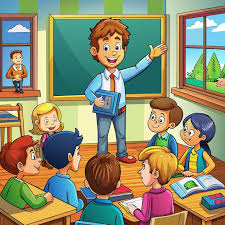The beloved teacher in room 203 has an unexpected ally in education—the colorful world of kids animated shows that captivate young audiences daily. While these programs are often dismissed as mere entertainment, a closer examination reveals sophisticated educational frameworks deliberately woven into engaging storylines. Animation studios increasingly collaborate with educational consultants to create content that entertains while simultaneously delivering valuable lessons across academic and social-emotional domains.
Consider the phenomenon of shows like “Wild Kratts,” where zoological concepts are seamlessly integrated into adventure narratives, or “StoryBots,” which tackles complex scientific questions through catchy songs and vibrant visuals. These aren’t accidental educational moments but carefully crafted learning experiences designed to complement classroom instruction. The line between entertainment and education continues to blur, creating opportunities for teachers to leverage children’s media engagement for academic benefit.
What makes animated educational content particularly effective is its ability to present information through narrative structures that naturally appeal to how children learn. Cognitive science has long established that human brains are wired for stories; we process and retain information more effectively when it’s presented as part of a coherent narrative rather than as isolated facts. Animation takes this principle further by adding visual representations that help concretize abstract concepts, particularly beneficial for young learners still developing their abstract reasoning abilities.
The educational impact extends beyond traditional academic subjects. Many contemporary animated series deliberately incorporate character development arcs that model positive social behaviors, emotional regulation strategies, and ethical decision-making. Shows like “Daniel Tiger’s Neighborhood” explicitly teach emotional intelligence skills through memorable songs and scenarios that children can reference when facing similar situations in real life. Teachers report that these shared cultural references become valuable tools in classroom management and social skills instruction.
Cultural representation in animated content has also evolved significantly, offering teachers resources for building inclusive classrooms. Modern shows increasingly feature diverse characters from various cultural backgrounds, family structures, and ability levels. This representation provides children windows into experiences different from their own and mirrors that reflect their own identities—both crucial components of developing empathy and positive self-concept during formative years.
For educators looking to effectively incorporate animated content into their teaching practice, intentionality is key. Rather than using videos as time fillers, successful integration involves preview and selection of specific content aligned with learning objectives, preparation of guiding questions or activities, and thoughtful follow-up discussions that help children process and extend the learning. Professional development resources increasingly offer frameworks for this kind of media integration, acknowledging the reality that children’s media consumption is an opportunity rather than an obstacle to learning.
Parents sometimes express concern about educational screen time, questioning whether animated content can truly support learning objectives. Research suggests that the answer depends largely on content quality and viewing context. Co-viewing with attentive adults who discuss content and connect it to real-world applications significantly enhances educational benefits. This finding highlights the complementary relationship between human teachers and animated content—neither replaces the other, but together they can create powerful learning experiences.
Technology continues to evolve the relationship between animation and education through interactive platforms that allow children to engage directly with animated educational content. Apps and websites featuring familiar animated characters guide children through adaptive learning experiences that adjust to their progress and provide immediate feedback. These tools offer teachers valuable differentiation opportunities, allowing them to address varying learning needs within their classrooms.
Looking forward, emerging technologies like augmented reality promise to further transform how animated educational content functions in learning environments. Imagine students using tablets to see animated characters demonstrating scientific principles in their actual classroom space, or historical figures appearing to narrate events in the locations where they occurred. These developments represent not just technological innovation but pedagogical evolution—new ways to connect abstract knowledge to concrete experiences.
Throughout these developments, the role of the teacher remains central—not as a passive consumer of ready-made content but as a curator, contextualizer, and connector who helps children transform media experiences into meaningful learning. The most effective educational approaches recognize that animated content functions best not as a replacement for human instruction but as a complement to it, offering engagement hooks, visual explanations, and cultural touchpoints that skilled educators can leverage toward broader learning goals.

